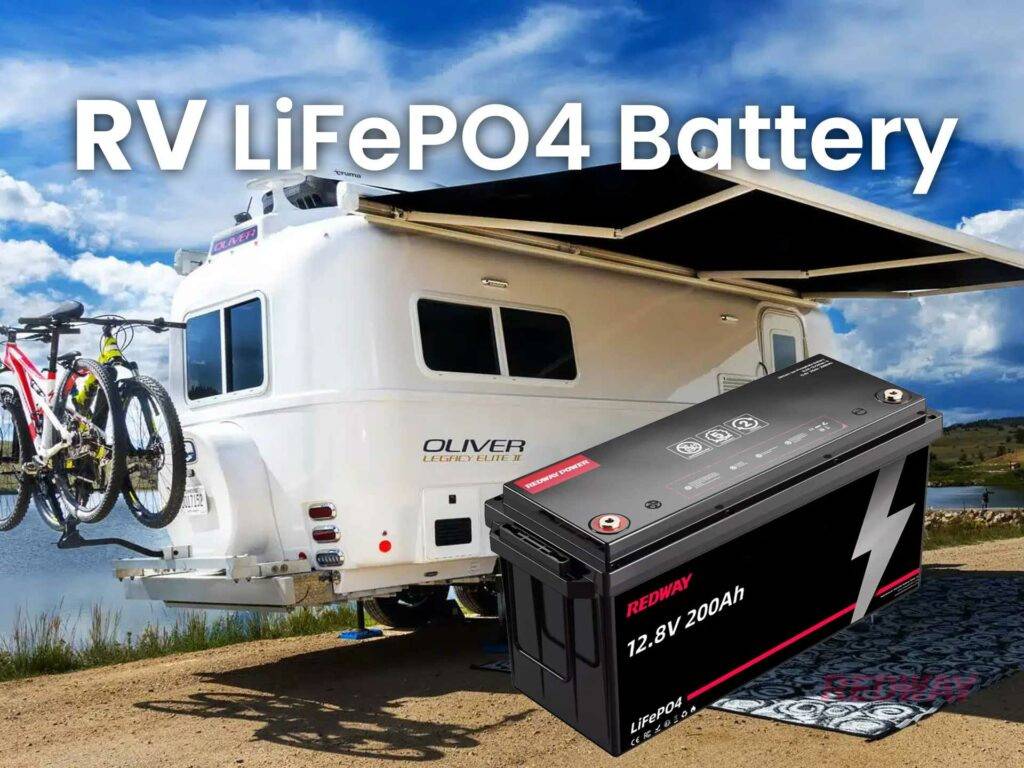In recent years, the adoption of lithium LiFePO4 (Lithium Iron Phosphate) batteries has transformed the RV power system landscape. These batteries are renowned for their durability, efficiency, and long life, making them a popular choice among RV enthusiasts. Unlike traditional lead-acid batteries, LiFePO4 batteries offer higher energy density, faster charging, and greater depth of discharge, which translates into a more reliable and extended off-grid experience.
Benefits of Lithium LiFePO4 Batteries for RVs
Lithium LiFePO4 batteries present numerous advantages over other types of batteries:
- Longer Lifespan: Typically, LiFePO4 batteries have a lifespan of 2000-5000 cycles, compared to the 300-500 cycles of lead-acid batteries.
- Faster Charging: They can be charged up to 10 times faster, which is ideal for RV users who require quick recharges.
- Higher Efficiency: These batteries have a higher charge and discharge efficiency, reducing energy loss.
- Lightweight and Compact: LiFePO4 batteries are more compact and lighter, allowing for better space utilization in RVs.
- Safety: They have a stable chemistry that reduces the risk of overheating and explosion.
Charging Methods for Lithium LiFePO4 Batteries
1. Standard Charging
Standard charging for LiFePO4 batteries involves using a DC-DC converter or a dedicated lithium charger. These chargers provide a constant current followed by a constant voltage, making them suitable for routine charging needs. The standard charging method typically includes:
- Bulk Charge Phase: The charger delivers a high current to quickly bring the battery voltage up to the absorption level.
- Absorption Phase: The voltage is maintained at a constant level, and the current gradually decreases as the battery reaches full charge.
- Float Phase: This phase maintains a lower voltage to keep the battery at full charge without overcharging.
2. Equalization Charging
Equalization charging is not usually required for LiFePO4 batteries. This method, common in lead-acid battery systems, involves periodically increasing the voltage to balance the charge across cells. LiFePO4 batteries inherently balance their cells and do not require this step.
3. Opportunity Charging
Opportunity charging refers to charging the battery whenever possible, regardless of its current state of charge. This method is particularly useful for RV users who frequently have access to charging sources, ensuring that the battery remains topped off and ready for use.
Charging Profiles and Stages
1. Bulk Charging
The bulk charging stage is the initial phase where the charger supplies a high current to rapidly increase the battery’s charge. For LiFePO4 batteries, this stage is crucial as it quickly restores the battery’s charge level, ensuring readiness for immediate use.
2. Absorption Charging
During the absorption phase, the charger maintains a constant voltage while the current gradually decreases. This stage ensures that the battery cells are fully charged, achieving a high state of charge without overcharging.
3. Float Charging
The float stage involves maintaining a lower voltage to keep the battery at full charge. While this stage is essential for lead-acid batteries, many LiFePO4 chargers do not include a float stage, as the battery’s inherent chemistry prevents overcharging.
Temperature Considerations
Temperature plays a significant role in the performance and charging efficiency of LiFePO4 batteries. Here are key temperature-related considerations:
- Charging Temperature Range: LiFePO4 batteries typically have a recommended charging temperature range of 32°F to 113°F (0°C to 45°C). Charging outside this range can affect the battery’s performance and longevity.
- Thermal Management: Effective thermal management systems, such as fans or cooling vents, are essential to maintain optimal operating temperatures and prevent overheating during charging.
Amperage and Charging Rates
1. Maximum Charge Current
LiFePO4 batteries are designed to handle high charge currents. It is recommended to use a charger with a maximum charge current rating of 0.5C to 1C, where C is the battery’s capacity in amp-hours (Ah). For example, a 100Ah battery can handle a charge current of up to 50A to 100A.
2. Charge Rate Adjustments
Adjusting the charge rate based on the battery’s capacity and the charger’s specifications ensures efficient charging. Overcharging can reduce battery life, so it is crucial to adhere to manufacturer recommendations for optimal charging rates.
State of Charge Management
Effective state of charge (SOC) management is vital for maximizing the performance and lifespan of LiFePO4 batteries. Key practices include:
- Battery Management System (BMS): A BMS monitors the battery’s voltage, current, and temperature, ensuring safe operation and preventing overcharging or deep discharge.
- Regular Monitoring: Utilizing a battery monitor or display allows users to track the battery’s SOC and make informed decisions about charging and usage.
Compatibility and Monitoring
1. Charger Compatibility
When selecting a charger for LiFePO4 batteries, ensure it is compatible with the battery’s specifications. Chargers designed for lead-acid batteries may not be suitable for LiFePO4 due to different charging profiles and voltage requirements.
2. Battery Monitoring
Battery monitoring systems provide real-time data on the battery’s performance, including charge level, voltage, and current. Advanced systems may also offer remote monitoring capabilities, allowing users to track the battery’s status from their smartphones or other devices.
Optimizing Your RV’s Power System
To optimize your RV’s power system with LiFePO4 batteries, consider the following practices:
- Regular Maintenance: Perform regular checks and maintenance to ensure all components, including the battery and charger, are functioning correctly.
- Upgrade Components: Ensure that other power system components, such as the inverter and solar panels, are compatible with LiFePO4 batteries and capable of supporting their charging requirements.
- Energy Efficiency: Implement energy-efficient practices and equipment to reduce the overall power consumption and extend the battery’s usable life.
Conclusion
Charging a lithium LiFePO4 battery in an RV involves understanding and implementing proper charging methods, profiles, and temperature considerations. By selecting the right charger, managing the state of charge, and optimizing the RV’s power system, users can ensure efficient, reliable, and long-lasting performance of their lithium batteries. Embracing these practices not only enhances the RV experience but also supports a seamless off-grid lifestyle.





